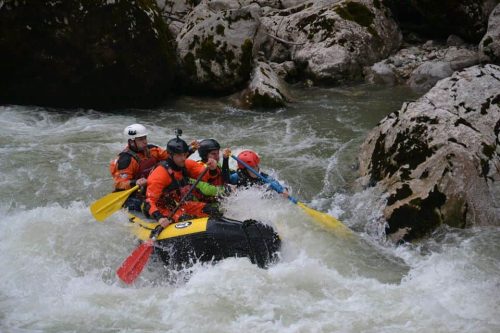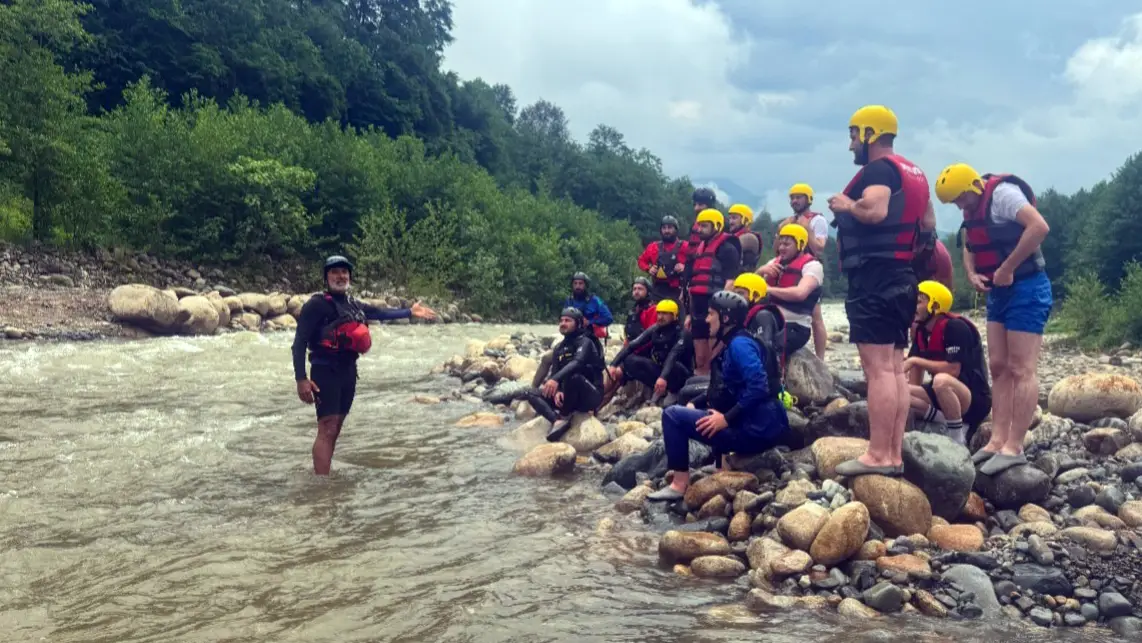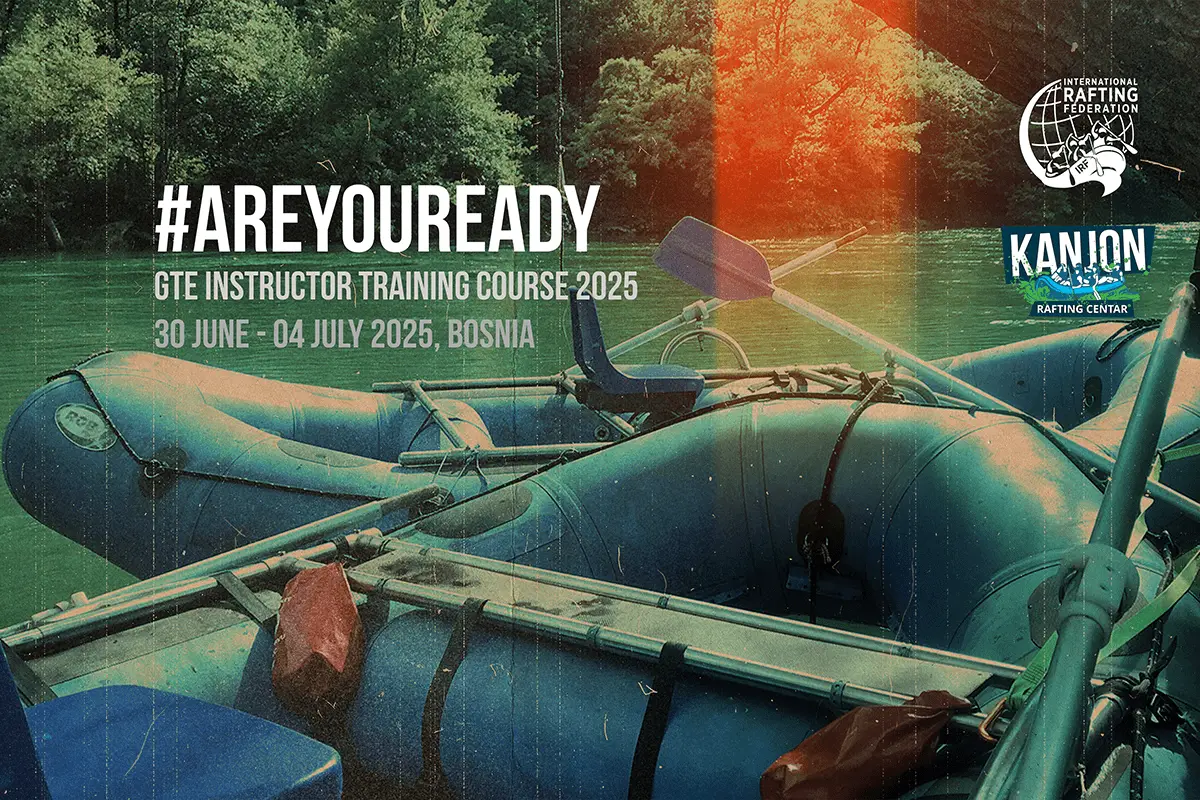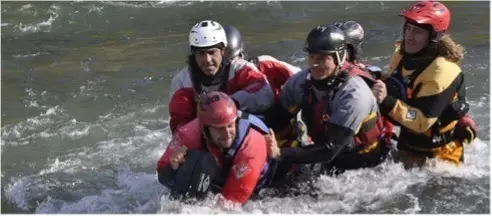As I walked down the steps on to the Tarmac at Leh airport I had that familiar feeling of being short of breath as the altitude hit me. This weeks 7 day International Rafting Federation workshop was to be based at the base camp of Wet ‘n Wild explorations in Nimoo at the altitude of 3500m above sea level on the banks of the lower Indus & Zanskar rivers.
For those unfamiliar with the Northern Indian town of Leh part of the Ladakh region in the Northern Indian state of Jammu & Kashmir. Let me explain a little :
First off there is very little humidity due to the altitude of 3500m. So expect your lips & skin to start drying immediately.
Second: Ladakh is the sunniest state in India. The sun in Ladakh is harsh and brutal (my hands look like they aged 40 years since my last post). We spending 7 days on the water so the sun is intensified by the waters’ reflection.
Third: The altitude of 3500m affects you. The thin mountain air make the simplest of tasks become a breathless ordeal. Standing up quickly or bending down to tie your shoelaces can leave you breathless and dizzy. I have often experienced waking up at night out of breath with a short feeling of suffocation.
This was to be my third trip to the area. I knew that the students on the course were in for a shock.
I had been planning this workshop since February. Seven months later we were almost ready for the take off. The students had started to arrive in the camp. This workshop had a true international flavor. The course was made of a team of guides who had travelled from the following countries: India, Bosnia, UK, Spain, Russia and Argentina.
The workshop was to be run by myself from the UK, and Gaspar from Hungary.
This workshop was going to a mixture of global experience. Secretly I could not wait for the action to begin.
As I have mentioned many times before it is very rare that a guide can present themselves for an IRF assessment and be polished in all areas of raft guiding. As per the popular trend for this year I had combined the first 3 days of the workshop with Rescue 3 Europe Whitewater Rescue Technician Professional certificate (WRT PRO)
Gabby & Dave working through MA systems
The first 3 days of the course were gong to be spent looking at the whitewater rescue skills of the guides and preparing them for the final 4 days of assessment on the course. The WRT gave the guides a chance to update or learn new rescue skills. The WRT also played another silent role. It was allowing the guides to work together as a team and create a working relationship that would help them during the IRF trip leader emergency scenarios.
We based the first 2 days of the WRT on the rapid next to the Wet & Wild Explorations, a 100m long big volume class 3 rapid on the lower Indus river. We kicked off the first morning in the classroom discussing the Rescue 3 philosophy & rescue theory along with communications & personal equipment.
We ventured out on to the water to look at whitewater swimming techniques. I could hear the guides quietly laughing at me when I gave them a very simple 70m class 2 swim. The laughs were soon gone when the students realised how cold the water was. The midday heat was so hot even the instructors had to cool off. Each of the students completed the swim, the local Indian guides were shivering due to the lack of quality PPE (personal protective equipment) available to them. The international guides mostly had dry-suits but were gasping for breath as the altitude was teaching them a lesson.
The learning from the mornings theory lessons were starting to ring home. When working in whitewater at altitude the Self, Team, Victim, rescue priorities were ringing big loud bells.
We continued through the next 2 days working through the WRT syllabus.
We completed day one with a basic rope work session looking at the knots needed for river use.
Day 2 started with shallow water work and some rescue scenarios. We spent the afternoon looking at pinned boats and mechanical advantage. The team were really starting to gel together now. The instructor candidates were starting to show their experience coaching the less experienced students on mechanical advantage and rope-work skills.
On the evening of day 2 we looked at night operations. We discussed search theory along with night rescue operations. I then set up a night search scenario by hiding some willing volunteers around and in the river, all of the first 2 days learning were put into practice. After the search exercise we focused throwbag exercises in the dark.
The final day of the WRT was spent looking at the use of a raft in a rescue along with tensioned diagonals. All of the students were now qualified Rescue 3 Whitewater Rescue Technicians.
Day 4 was the first day of the 4 day IRF workshop. Gaspar had joined me as the numbers were high, we had 11 students ranging from instructor candidates through to 1st year guides. Gaspar was also observing how I delivered the workshop as I myself am working through the pathway to become an IRF assessor.
Flip drill time
The first morning was spent assessing the throwbag & flip drills. I had already assessed the swimming & rope-work skills during the WRT section beforehand. Both myself & Gaspar set up 2 work stations, I ran the flip station & Gaspar ran the throwbag station. This way we were both able to keep all of the students active. All of the foreign students mentioned that the flatwater standard IRF flip drill was a challenge at this altitude.
During the afternoon of day 3 we looked at the use of a kayak in a raft operation as we focused on the safety craft assessments. The non kayaking students got to spend some extra stick time coaching with Gaspar whilst I put the safety kayakers through their paces. We looked at dealing with multiple & panicked swimmers. The students also go to look at how to deal with unconscious swimmers from a kayak and to experiment with taking control of a guideless raft, they practised using vocal commands along with manipulating the rafts position with their kayaks and ultimately exiting there kayaks into a raft to take control of the situation.
Days 5 & 6 were spent based on the Lardo class 4 rapid on the big volume, lower Indus river. Lard was also the venue for the recent High altitude Ladakh river festival. Lardo is a 200m big volume class 4 rapid with multiple lines each with interesting consequences if the line is missed. The next 2 days were going to be spent looking at class 4 rafting skills and trip leader emergency scenarios. It was interesting to watch the guides step up when we asked who wanted to guide Lardo first. Once the lines had been run a few times confidence levels rose amongst the students.
Both myself and Gaspar agreed that we wanted to have a large element of practical rafting skills included in the TL scenarios as any potential scenarios on Lardo would be dynamic in nature and would involve customers / victims spread out over a large area. We took turns to set up and assess each scenario. We had 2 days to run 9 trip leader scenarios. Each scenario had complex issues which were both fun to set up and a learning experience for the students.
Some of the subjects covered in the scenarios were.
- Multiple mid stream stranded swimmers.
- Non English speaking stranded swimmers
- Lost customers
- Flipped rafts
- Hypothermic customers
- Entrapped customers
- Customers with shoulder dislocations
- Non cooperative customers
- In a emergency scenario the trip leader needs to be a strong leader with good communication & delegation skills.
- Once an emergency scenario has been dealt with a good trip leader should debrief the whole team quickly to regain group control and re motivate the customers.
Day 7 was spent observing each of the instructor candidates delivering a 20 minute theoretical classroom based session. The Guides & Trip Leaders had selected the topics that they wished to see a presentation on. Many of the
Instructor candidates delivered very interesting presentations. The key learning points for the instructor candidates were:
- Give your talk a structure (introduction, activity, summary).
- Position your students in a style where learning can be maximized.
- Don’t make your subject too big (keep it simple)
- Use as many visual aids as possible, involve the students as much as possible).
The workshop was a great successes for all involved. The IRF now has new provisional Instructors from UK, India & Russia. We have a host of new trip leaders, guides and safety kayakers from India, Spain and Ecuador. A warm, heart felt thanks to Chotak & the team from Wet ‘n Wild Explorations in Leh, India, and to the candidates for making the workshop a great learning environment.




